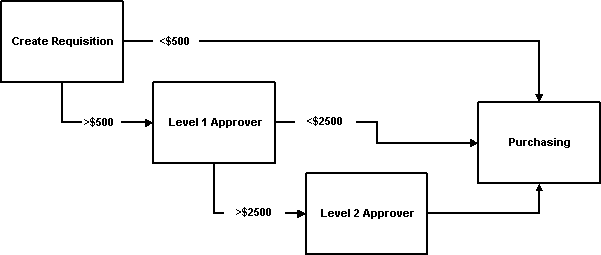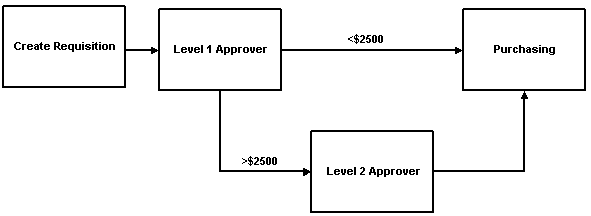
Purchasing in SAP

 |
Purchasing in SAP |
 |

| Paper Requisition | EREQ Requisition | SAP Requisition | |
| Ability to create a requisition |
|
|
|
| Ability to approve a requisition | Signature auth. in VAPS | EREQ profile based on signature auth. file | Approver auth. in SAP profile |
| Routing for approval | Hand carry | Electronic routing | Electronic routing per predefined criteria selected from SAP options |
| Ability to create "DAPO" for <$2500? | No | Yes | Alternatives currently being evaluated |
| Paper Requisition | EREQ Requisition | SAP Requisition | |
| Create commitment? | Not until PO issued | Not until PO issued | Created as soon as requisition is saved |
| Accepted by Internal Providers? | Yes | Yes, for selected internal providers | Phased rollout to internal providers planned |
| Check available funds before creating requisition? | No | No | Yes, if SAP departmental budget and funds checking options implemented by department |
| Visibility of transaction in SAP | When PO issued, it is visible via SAPweb (or SAP) lookup | When PO issued, it is visible via SAPweb (or SAP) lookup | Both SAP requisitions and PO's are visible in SAP. |
Recommended options developed by authorizations focus group Choice of 4 approval/routing options ("release strategies" in SAP) Up to 2 levels of approval Approval can be based on dollar amount and/or item being purchased
| 1 | No approvals required | If you are authorized to create a requisition, it will be sent directly to Purchasing without review. |
| 2 | Two approvals required for all requisitions | Any requisition, regardless of dollar amount, has to have two levels of approval before going to Purchasing. |
| 3 | Approval determined by dollar amount
-- Option A |
< $500 - no approval required
$500 - 2499 -- Level 1 approval > $2500 -- Level 2 approval |
| 4 | Approval determined by dollar amount
-- Option B |
< $2500 -- Level 1 approval
> $2500 -- Level 2 approval |




| Workflow | SAP's routing mechanism. Workflow routes requisitions for approval, sends approved requisitions to Purchasing, and returns a rejected requisition to the originator. |
| Release Strategy | A set of business rules used to evaluate a requisition line item to determine the types of approvals needed before it can be released to Purchasing. Release strategies "tell" workflow where to send a requisition. E.g., whether it requires approval or should be sent directly to Purchasing. |
| Level 1 and Level 2 Approver | A requisition can have up to two levels of approval (Level 1 being the lower). SAP users can be authorized as Level 1 or Level 2 approvers. Requisitions requiring approval are routed to the appropriate level of approver. |
| Release a requisition | In SAP, you approve a requisition by releasing it. |
| Material Group | Commodity classification of item being purchased, similar to object code. Material groups will be used for routing requisitions for radioactives, sensitive items, etc. |